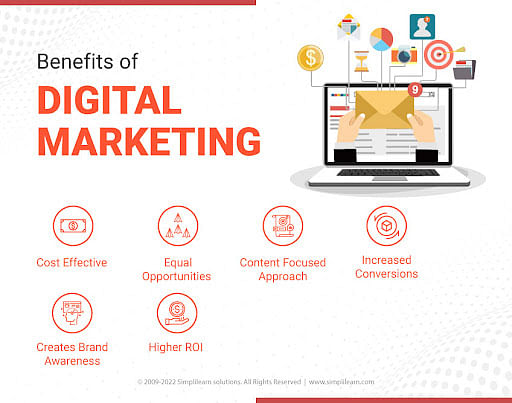Enhance Individual Experience and Drive Website Traffic With Receptive Internet Design
In today's electronic landscape, where individuals are accessing internet sites from a multitude of devices, responsive internet style has become much more essential than ever before. With its capability to adjust and perfectly adjust to various screen sizes, receptive layout not just boosts customer experience yet also drives traffic to your website. Why is this design method so vital? Just how does it increase customer involvement and rise site web traffic? In this conversation, we will discover the crucial elements of efficient responsive design, explore the most effective techniques for its execution, and reveal the secrets to improving user experience while driving even more website traffic to your internet site.
Why Receptive Web Design Issues
Responsive web design is a crucial element of contemporary internet advancement due to its ability to make sure optimum customer experience across different tools and display sizes. With the spreading of smartphones, tablets, and various other mobile phones, it has become essential for websites to adapt and provide smooth capability despite the gadget being utilized.
The key reason responsive website design issues is that it permits users to have a constant and pleasurable searching experience, despite the device they are using. A receptive website immediately adjusts its web content, style, and format components to fit the display size and resolution of the gadget, making sure that users can conveniently interact and browse with the site with no trouble or aggravation.
Additionally, responsive web layout likewise plays a considerable role in search engine optimization (SEARCH ENGINE OPTIMIZATION) Internet search engine, such as Google, prioritize web sites that are mobile-friendly and responsive in their search results. By integrating responsive design concepts, sites can improve their visibility and ranking, resulting in increased organic website traffic and possible customers.

Boosting Individual Engagement With Responsive Design
Maximizing customer engagement is an essential goal of responsive layout, as it makes sure that customers can conveniently gain access to and communicate with website content on any type of gadget. With the raising use tablets and smartphones, it is crucial for sites to adjust to various screen sizes and resolutions. Responsive design allows websites to automatically adjust their format and material to provide a smooth customer experience throughout devices.
One of the primary ways receptive layout enhances user interaction is by reducing tons times. With a responsive internet site, customers do not need to await different mobile variations to load, resulting in quicker access to web content. This better rate leads to higher user satisfaction and urges them to spend more time on the website.
Furthermore, responsive design improves user engagement by improving navigating and interface (seo Carlsbad). When a site is made responsively, buttons and food selections are enhanced for touch interactions, making it simpler for individuals to interact and browse with the website on their mobile phones. This intuitive and straightforward experience keeps individuals engaged and urges them to check out more of the internet site
In addition, responsive design enables far better web content presence and readability. By adjusting the format and font style sizes to various devices, responsive web sites guarantee that users can easily comprehend the web content and check out. This boosts individual involvement by lowering the requirement for zooming or scrolling to read the message.
Enhancing Internet Site Website Traffic With Responsive Internet Layout
With the expanding popularity of mobile devices, having a website that is receptive to different screen dimensions and resolutions is essential for driving raised traffic. In today's electronic landscape, users are accessing web sites from a range of tools such as smartphones, tablets, and desktop computers. Each of these devices has various screen dimensions and resolutions, and if your internet site is not created to adjust to these variants, it can result in a bad user experience and a loss of prospective website traffic.
Responsive website design ensures that your site looks and functions ideally across all tools. By making use of flexible grids, fluid photos, and media questions, receptive layout enables your internet site to automatically change its content, navigating, and layout to fit any type of display size. This means that users will certainly have a smooth browsing experience regardless of whether they are making use of a large desktop or a tiny mobile phone computer system.
Crucial Element of Effective Responsive Design
Efficient receptive design incorporates numerous crucial aspects that make certain a smooth customer experience throughout various tools. Among these components is versatile grids and layouts. By using family read this post here member units like portions as opposed to fixed devices like pixels, developers can develop formats that scale and adapt to fit different screen sizes. This allows material to be shown in a understandable and visually attractive manner on any kind of tool.
One more important aspect is media inquiries. These enable designers to use various styles and layouts based upon the features of the customer's tool, such as screen size and orientation. By utilizing media queries, designers can optimize the presentation of material for each gadget, making sure that it is understandable and conveniently obtainable.
Responsive photos are additionally crucial in reliable responsive style. Pictures that are as well huge can reduce page load times on mobile phones, while photos that are too little might appear pixelated on bigger screens. By utilizing strategies such as responsive photo resizing and careless loading, designers can ensure that photos are appropriately sized and optimized for every gadget.
Finally, reliable receptive layout entails a mobile-first strategy. This suggests prioritizing and developing content for smart phones initially, and after that increasing and boosting the style for bigger screens. This strategy makes sure that one modern web design of the most crucial content is quickly accessible on smaller displays, while still giving a rich experience on larger gadgets.
Best Practices for Carrying Out Responsive Internet Design
Implementing receptive web style needs mindful factor to consider of various best methods to guarantee an optimum individual experience throughout different devices. Right here are some key ideal techniques to follow when carrying out responsive website design.
First of all, it is critical to focus on mobile individuals. With the enhancing dominance of mobile gadgets, developing for mobile-first has become essential. Beginning by creating for smaller sized screens and afterwards considerably boost the format for larger displays.

An additional crucial best technique is to optimize images for different display resolutions. Huge pictures can reduce the loading time of your website, particularly on smart phones with slower links. my review here Use responsive images that can be resized based on the gadget's display resolution to boost efficiency.
Additionally, examination your internet site on various devices and display dimensions to make sure a smooth and regular experience. There are various screening devices readily available that can assist you recognize any problems and make necessary modifications.
Finally, prioritize use and accessibility. Guarantee that your internet site is easy to navigate, with concise and clear content. See to it that your web site is easily accessible to people with impairments and adheres to access standards.
Conclusion
In verdict, responsive web design plays a crucial duty in improving individual experience and driving traffic to internet sites. By adopting receptive style principles, websites can guarantee optimum viewing experiences across various gadgets, leading to increased customer engagement.
Optimizing individual interaction is a crucial goal of responsive layout, as it makes certain that users can quickly access and communicate with internet site material on any kind of device. Responsive layout enables web sites to instantly change their format and web content to provide a smooth individual experience across devices.
Furthermore, responsive design enhances user engagement by boosting navigation and individual interface.Responsive pictures are additionally critical in effective receptive layout. By embracing receptive layout concepts, websites can make sure ideal checking out experiences across various tools, leading to raised individual engagement.